Imagine you're a marketer trying to optimize your ad spend across multiple channels. You've invested heavily in various marketing strategies, but understanding which ones are truly driving sales can feel like navigating a maze. Many marketers face the daunting challenge of accurately attributing sales to the right channels, often leading to wasted budgets and missed opportunities. By the end of this article, you’ll know exactly how to identify the best attribution tools that can enhance your marketing strategies and improve your decision-making processes.
Let's dive into the top alternatives to HockeyStack marketing attribution.
Best for: Real-time optimization and comprehensive data accuracy.
Cometly is a powerful attribution tool that offers advanced capabilities, making it a strong contender for marketers looking to optimize their ad spend.
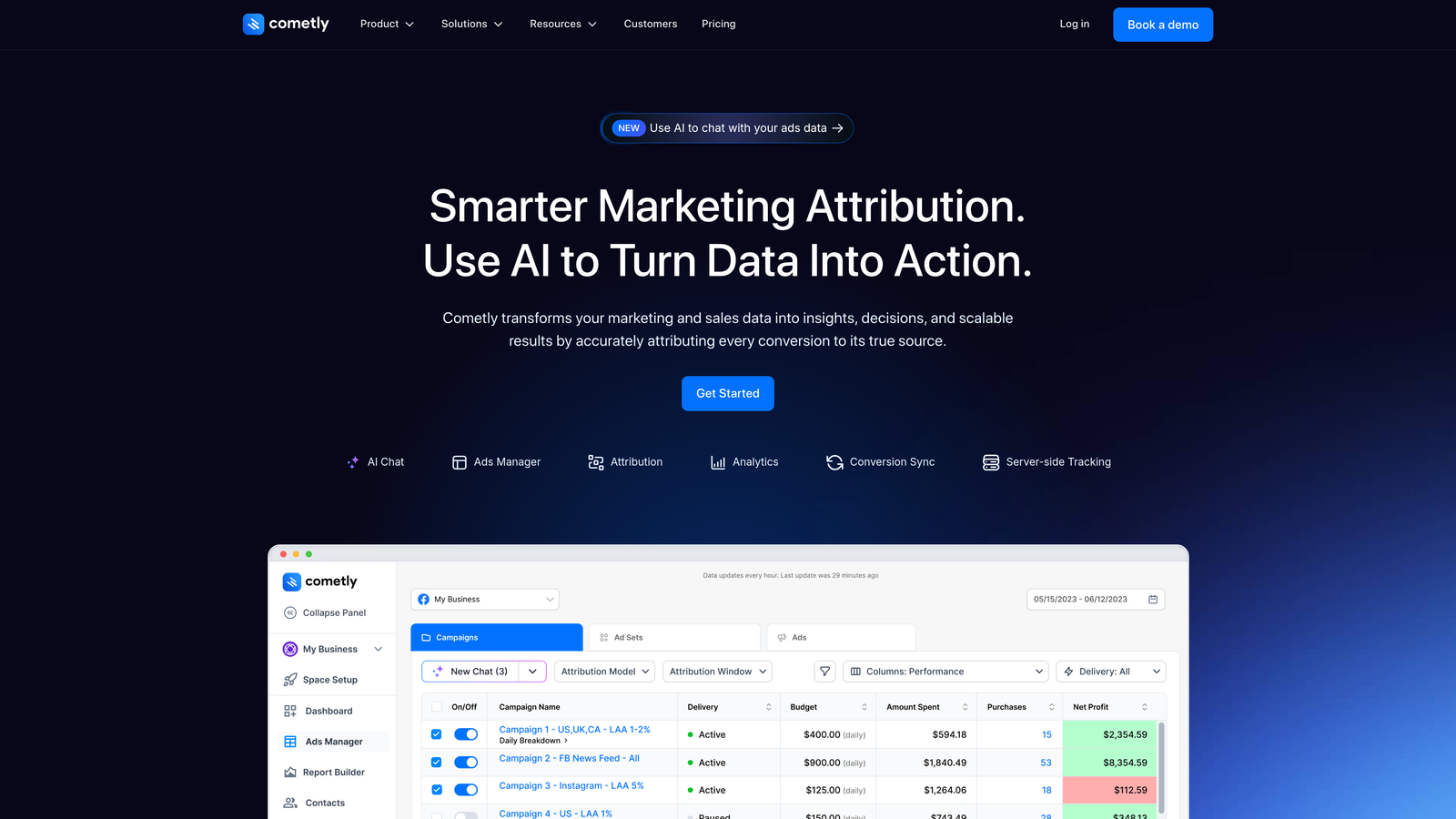
Cometly excels in providing AI-driven recommendations that enhance multi-touch attribution. Users benefit from real-time insights that allow for agile marketing adjustments.
Overview & Background: Cometly is designed for businesses seeking a comprehensive understanding of their marketing performance. It integrates seamlessly with various ad platforms, ensuring that marketers have a clear view of their campaigns' effectiveness across channels.
Key Features:
1. AI-Driven Recommendations: Cometly uses advanced algorithms to suggest optimal adjustments to campaigns based on real-time data.
2. Multi-Touch Attribution: The platform captures every interaction a customer has with your brand, providing a complete picture of the customer journey.
3. User-Friendly Interface: Its intuitive dashboard makes it easy for users to navigate and access critical insights.
4. Integration Capabilities: Cometly integrates with popular ad networks, ensuring that data flows smoothly across platforms.
5. Customizable Reports: Users can create tailored reports that focus on specific metrics important to their marketing strategies.
Pricing & Value Proposition:
Cometly offers various pricing models tailored to different business sizes and needs, ensuring value across the board.
Cometly delivers much more than a standard analytics experience. While platforms like HockeyStack help visualize data, Cometly’s Ads Manager is built to connect every insight directly to action.
Inside Cometly, you can build fully customizable dashboards to track any event in your funnel — from leads and purchases to custom lifecycle milestones. These dashboards make it easy to visualize performance across every channel. But the real power comes from the Ads Manager, where analytics, attribution, and optimization come together in one place.
The Ads Manager ties every conversion back to the exact campaign, ad set, and ad that influenced it. Marketers can see in real time which ads drive results and which waste budget, all without manual setup or guesswork. Unlike traditional dashboards that only visualize performance, Cometly connects data to decision-making by showing how each touchpoint contributes to revenue.
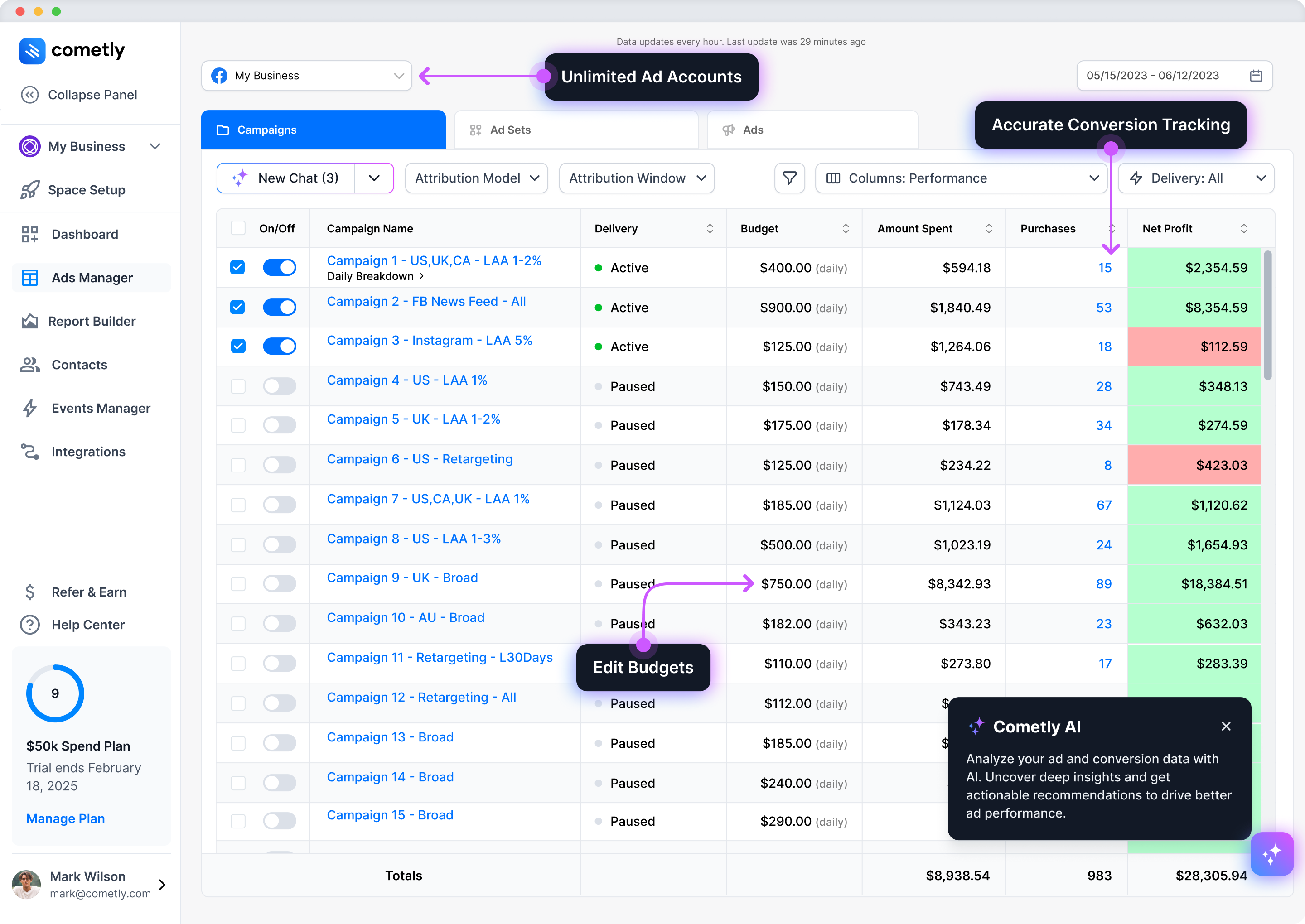
Cometly also integrates directly with ad platforms through its Conversion API, ensuring that every conversion is sent back with precise accuracy. When users take an action on your website — whether it’s a form submission, purchase, or demo booking — Cometly captures it server-side and sends it directly to Meta, Google, and other ad platforms. This improves attribution accuracy, helps algorithms learn faster, and ensures your ad platforms are optimizing based on complete, verified data.
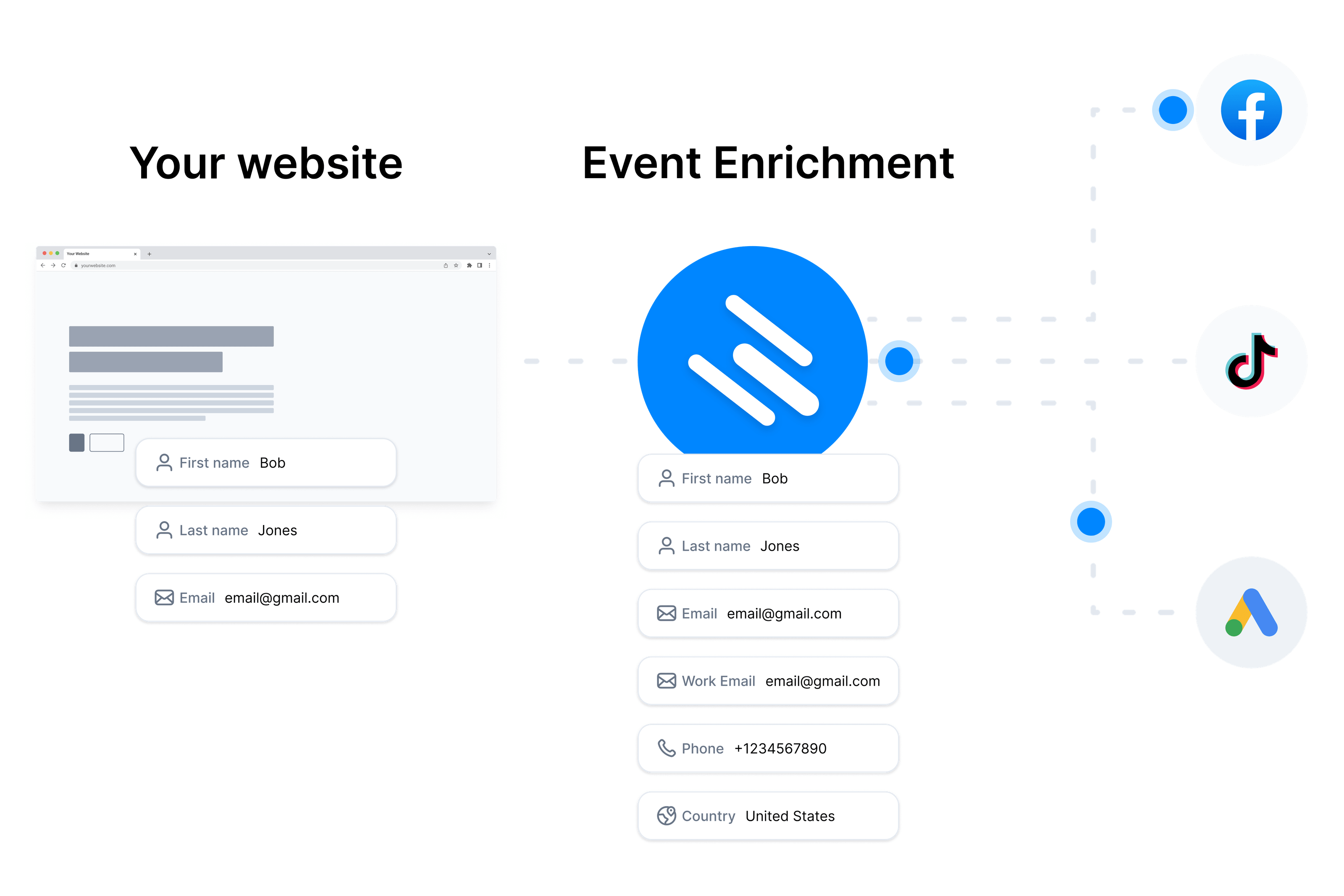
Cometly’s Conversion API is built differently. It doesn’t just send conversion data back to the ad platforms. It enriches every event with the most complete visitor profile, ensuring your ads perform better and your tracking is far more accurate.
Here’s what that means for you:
By combining enriched event data with server-side tracking, Cometly’s Conversion API gives your ad platforms the context they need to make better decisions — leading to higher-performing campaigns and more reliable attribution.
To put it all together for Cometly as an alternative to Hockeystack:
Cometly doesn’t just show what happened. It explains why it happened, ensures your ad platforms know it too, and gives you the clarity to scale profitably.
Best for: Comprehensive website and campaign tracking.
Google Analytics 4 is the latest version of Google Analytics, providing enhanced tracking capabilities for digital marketing strategies.
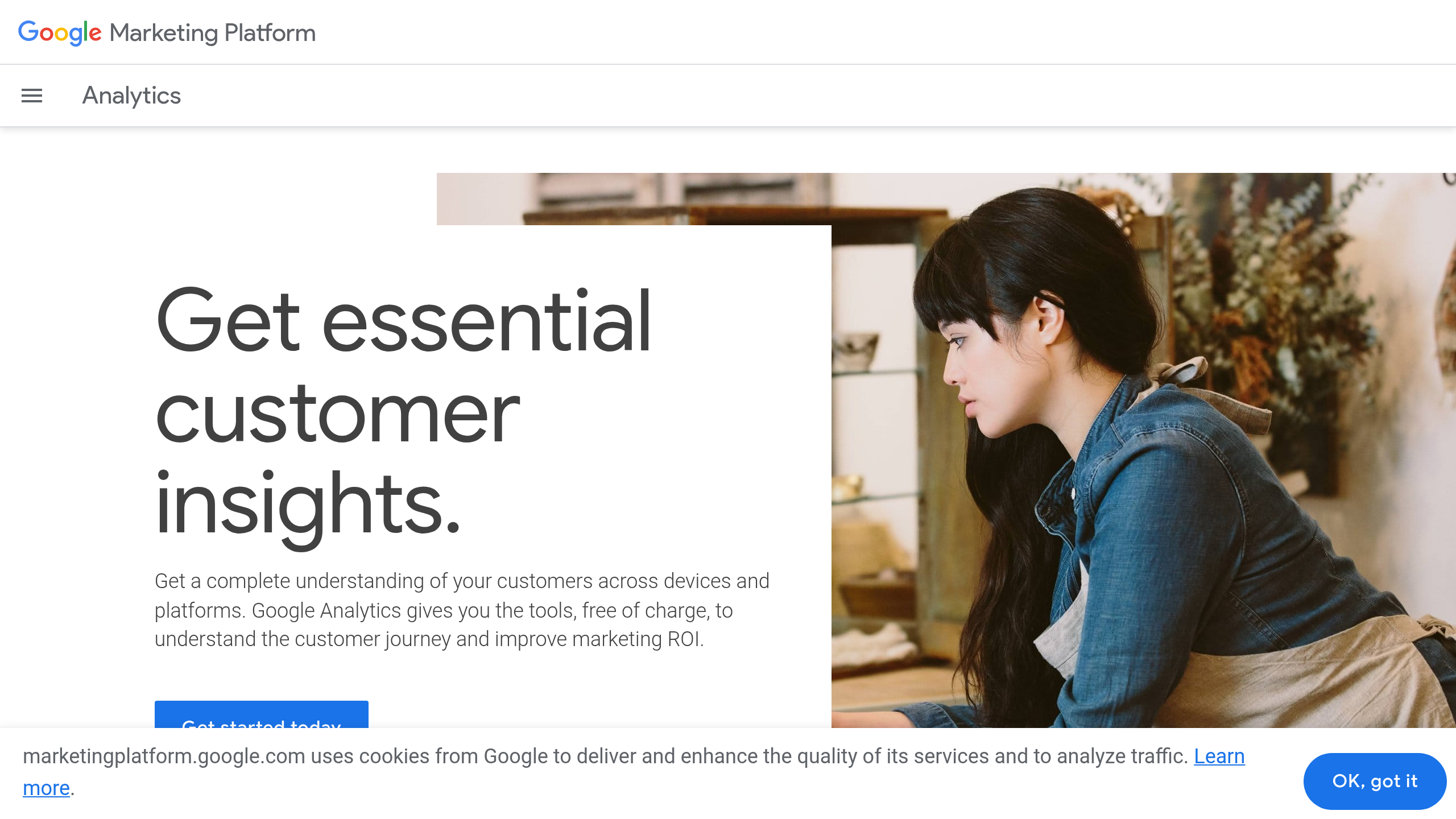
GA4 focuses heavily on event-based tracking, allowing marketers to understand user interactions in greater detail.
Overview & Background: Google Analytics has long been a staple in the marketing world, and its latest iteration brings new features designed for modern marketers. The shift to an event-driven model allows for more nuanced tracking of user behavior.
Key Features:
1. Enhanced Measurement: GA4 automatically tracks interactions, such as scrolls and downloads, without additional setup.
2. Cross-Platform Tracking: It provides a unified view of user interactions across web and app platforms.
3. Predictive Insights: The tool uses machine learning to predict future actions based on user behavior.
4. Integration with Google Ads: Marketers can easily link their Google Ads accounts for seamless data sharing and campaign optimization. Learn more about top Google Analytics alternatives.
5. Custom Reporting: Users can create tailored reports that focus on specific metrics important to their marketing strategies. Learn more about top GA4 alternatives.
Pricing & Value Proposition: Google Analytics 4 is free to use, making it an ideal solution for businesses of all sizes looking to enhance their marketing analytics.
Best for: Comprehensive marketing automation and CRM integration.
HubSpot is an all-in-one marketing platform that integrates CRM capabilities with powerful marketing tools.
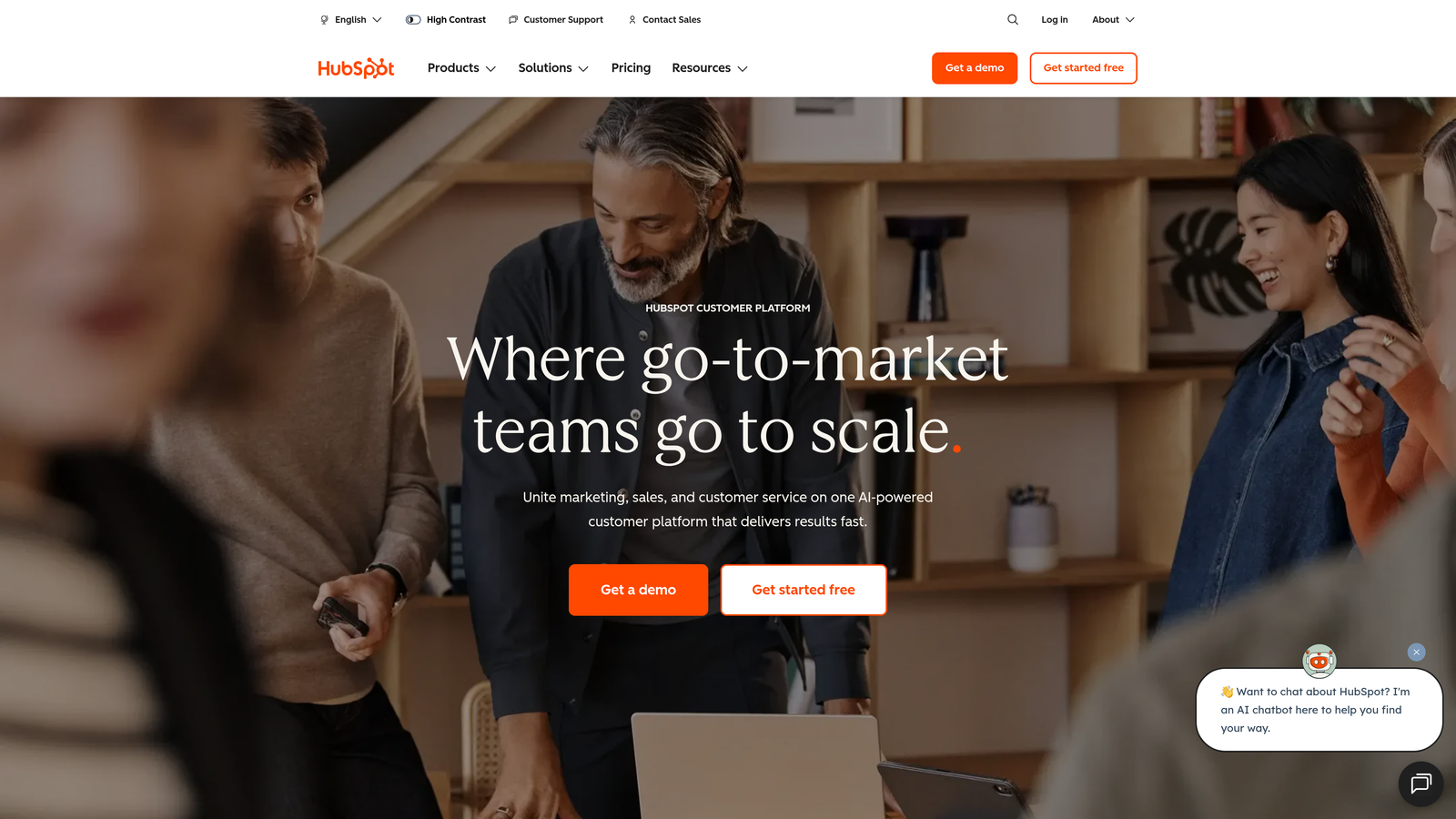
HubSpot is designed to help businesses automate their marketing efforts while providing clear visibility into campaign performance.
Overview & Background: HubSpot has established itself as a leader in the marketing automation space, offering a suite of tools that cater to various aspects of marketing, from email campaigns to social media management.
Key Features:
1. Integrated CRM: HubSpot's CRM is built into the platform, allowing for seamless communication between marketing and sales teams.
2. Email Marketing Automation: Users can create and automate email campaigns based on user behavior and preferences.
3. Social Media Management: HubSpot allows users to schedule and manage social media posts directly from the platform.
4. Landing Page Creation: Users can create optimized landing pages that capture leads effectively.
5. Detailed Analytics: HubSpot provides robust reporting features that allow users to track the effectiveness of their campaigns. Learn more about top HubSpot Marketing Attribution alternatives.
Pricing & Value Proposition: HubSpot offers a free tier with essential features, while advanced functionalities are available through paid plans, making it suitable for businesses of all sizes.
Best for: Product analytics and user engagement tracking.
Mixpanel specializes in product analytics, helping businesses understand how users interact with their applications.

Mixpanel offers insights that enable product teams to optimize user engagement and retention.
Overview & Background: Mixpanel has carved out a niche in the product analytics space, focusing on providing actionable insights that help teams improve user experiences and drive engagement.
Key Features:
1. Event Tracking: Mixpanel allows users to track specific user interactions within their applications, providing granular insights.
2. Cohort Analysis: Users can segment their audience and analyze behavior over time, allowing for targeted marketing strategies.
3. A/B Testing: Mixpanel enables product teams to run experiments to determine the best user experiences.
4. Funnel Reports: Users can visualize and analyze the steps that lead to conversions, helping identify drop-off points. Learn more about top Mixpanel alternatives.
5. Real-time Data: Mixpanel provides real-time analytics, allowing teams to respond quickly to user behaviors and trends.
Pricing & Value Proposition: Mixpanel offers a free tier with limited capabilities, while paid plans provide access to advanced features tailored for growing companies.
Best for: Enterprise-level analytics and insights.
Adobe Analytics is a powerful tool designed for enterprises looking to gain deep insights into customer behavior.
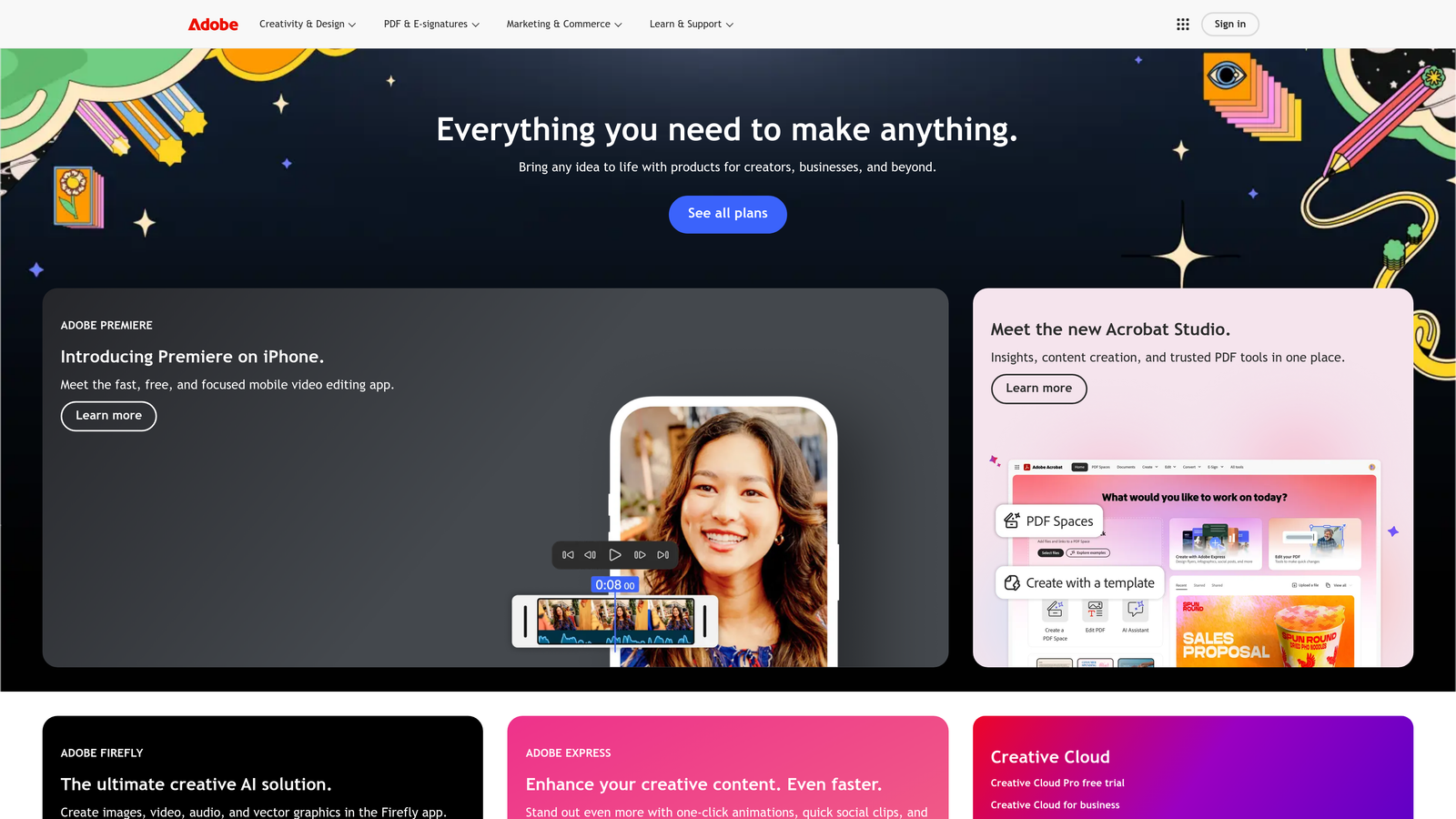
Adobe Analytics enables businesses to track complex customer journeys and derive actionable insights.
Overview & Background: As part of the Adobe Experience Cloud, Adobe Analytics provides a comprehensive suite of analytics tools tailored for large organizations and enterprises.
Key Features:
1. Custom Variables: Adobe allows users to create custom metrics and dimensions for tailored reporting.
2. Attribution Models: Users can apply different attribution models to analyze the impact of various channels on conversions.
3. Segmentation: Adobe Analytics offers advanced segmentation capabilities to analyze different customer cohorts.
4. Data Visualization: Users can create visual reports that make it easier to derive insights from the data collected. Learn more about top Adobe Analytics alternatives.
5. Integration: The platform integrates seamlessly with other Adobe tools, enhancing its functionality and usability.
Pricing & Value Proposition: Adobe Analytics operates on a custom pricing model, making it suitable for large enterprises that require comprehensive analytics capabilities.
Best for: Data visualization and business intelligence.
Tableau is a leading data visualization tool that allows businesses to analyze and visualize their marketing data effectively.
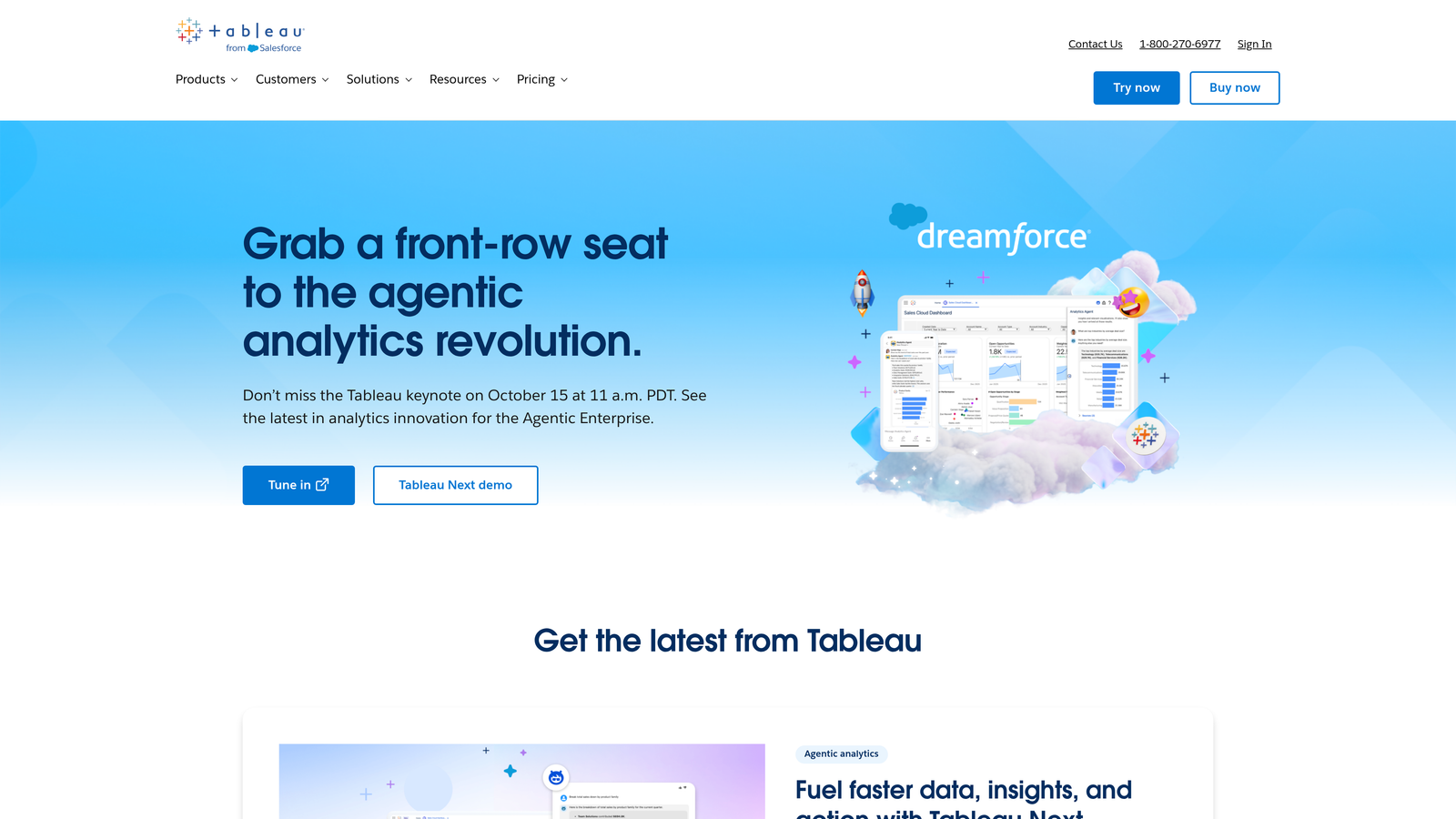
Tableau helps users create interactive and shareable dashboards that showcase trends and insights.
Overview & Background: Tableau has become a go-to tool for businesses looking to turn their data into actionable insights through powerful visualizations.
Key Features:
1. Drag-and-Drop Interface: Tableau’s user-friendly interface allows users to create visualizations without needing extensive technical skills.
2. Support for Multiple Data Sources: Users can connect Tableau to various data sources, including databases, spreadsheets, and cloud services.
3. Interactive Dashboards: Tableau enables users to create dashboards that allow stakeholders to explore the data further.
4. Advanced Analytics: Users can apply complex calculations and statistical models to their data.
5. Collaboration Features: Tableau allows for easy sharing of dashboards and reports within teams. Learn more about top Tableau alternatives.
Pricing & Value Proposition: Tableau offers several pricing options, including a free trial, enabling users to explore its capabilities before committing.
Choosing the right attribution tool is crucial for marketing success. As we've explored, tools like Cometly, Google Analytics 4, HubSpot, Mixpanel, Adobe Analytics, and Tableau each offer unique capabilities tailored to different marketing needs. Consider factors such as budget, specific marketing objectives, and team size when making your selection. For instance, if your focus is on comprehensive website analytics, Google Analytics 4 may be the best fit. Conversely, if you're looking for product analytics, Mixpanel could be the right choice.
Carefully assess your marketing goals and align them with the capabilities of the tools discussed. By leveraging the right attribution tool, you can improve your marketing effectiveness and drive better results.
Ready to elevate your marketing game with precision and confidence? Discover how Cometly's AI-driven recommendations can transform your ad strategy—Get your free demo today and start capturing every touchpoint to maximize your conversions.
Learn how Cometly can help you pinpoint channels driving revenue.
.svg)
Network with the top performance marketers in the industry